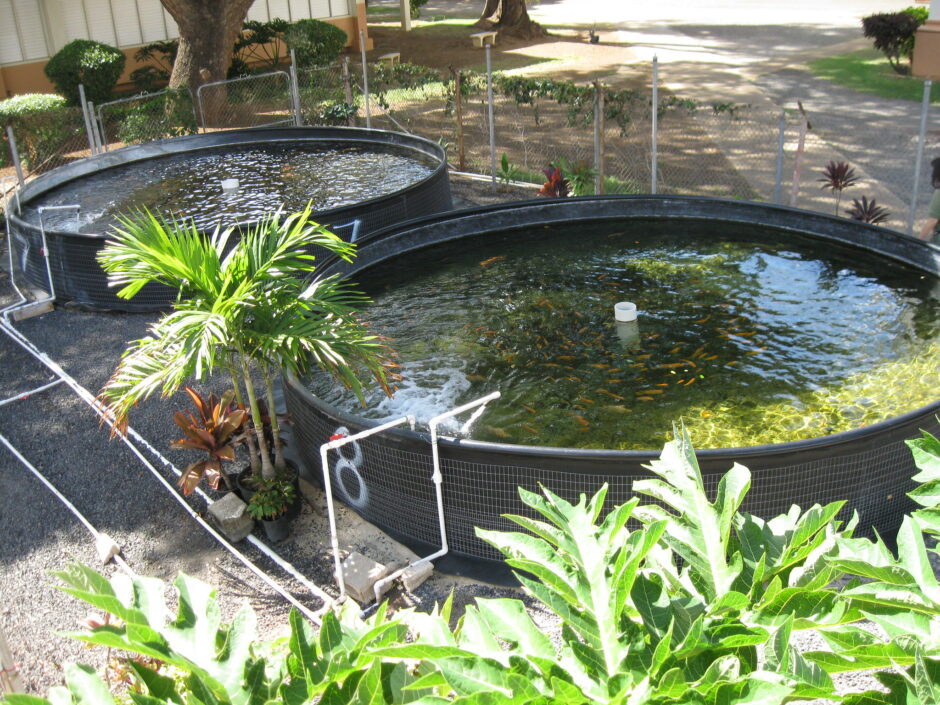Real-Time Monitoring Systems in Aquaculture

November's Bytemarks Lunch visit to the McKinley aquaculture fish farm. (Credit: Bytemarks CC BY-SA 2.0)
Monitoring in aquaculture settings is necessary to avoid fish kills, expensive losses, disease, and other water quality-associated complications. Temperature, dissolved oxygen, pH, and other key water quality parameters can all impact growth and production in ponds, so operators must continuously monitor pens and modify conditions if possible. Real-time monitoring systems are one way that operators can collect consistent, high-quality data.
System Design and IoT-Enabled Monitoring
Monitoring fish farms has taken many shapes over the years, though more modern innovations include real-time Internet of Things (IoT) integrated sensors and real-time logging potential.
Sensor instrumentation can be individual or multiparameter, focusing on temperature, dissolved oxygen, and pH. While some managers still rely on discrete sampling during trips to the farms, this approach has its own risks.
Even with a consistent sampling schedule, drops in dissolved oxygen can lead to hypoxic events that can go unnoticed and become lethal quickly, leading to fish kills and the loss of entire ponds of fish.
Generally, for this reason, real-time monitoring is ideal. While monitoring systems can be deployed on a stationary pole or on the sides of ponds, they can also be deployed in larger, open water areas to collect data.
Whether it be a pole or a buoy, instrumentation is similar—typically including a data logger and a suite of sensors specific to the needs of the fish being reared there. The data logger stores data internally or is equipped with IoT technology to transfer the data to the cloud remotely, enabling real-time data collection and viewing.
Such systems can capture water quality events that could impact production while they are happening, allowing operators to respond in a timely manner. Continuous monitoring can also capture conditions leading up to an event, improving management.
Considerations for Real-Time Monitoring Systems
Of course, each farm is different, so any real-time monitoring systems deployed should be designed with the specific application in mind.
If in an open-water application, net-pen operators need to be aware of conditions leading up to hypoxic events in order to best respond, as water quality can not quickly be treated in these settings.
Because these pens are out in open water, monitoring should measure conditions throughout the water column, which can be accomplished with a system attached to buoy lines or a data buoy with sensors running from the surface to the bottom of the water body.
It’s important to consider water depth and any differences between the pens that could affect water quality. For example, shallower pens may be at a greater risk of higher temperatures that can harm fish, so real-time temperature monitoring can keep managers informed and lead to site changes or relocations.
For closed systems, a telemetric logger and appropriate sensing instrumentation (depending on the farmed species) can collect essential data and alert operators of issues, prompting quick response and preventing losses.
Regardless of location, power availability and alternative power supplies should also be considered when designing real-time monitoring systems. Sensor ranges are also an important consideration, as higher accuracy with a smaller range may be best for more sensitive species.
Conclusion
Ultimately, real-time monitoring systems offer higher-resolution data that can improve aquaculture management. Operators equipped with real-time data can respond quickly to events that could damage stock quickly, preventing losses and maximizing efficiency.


0 comments